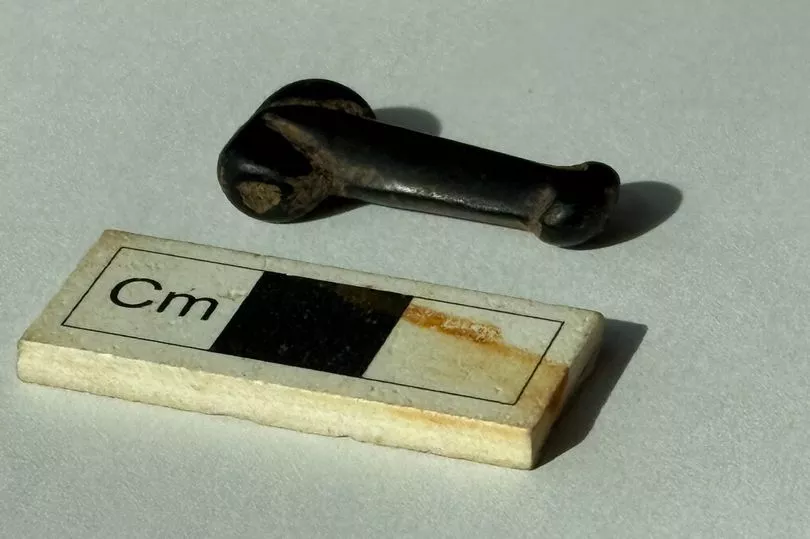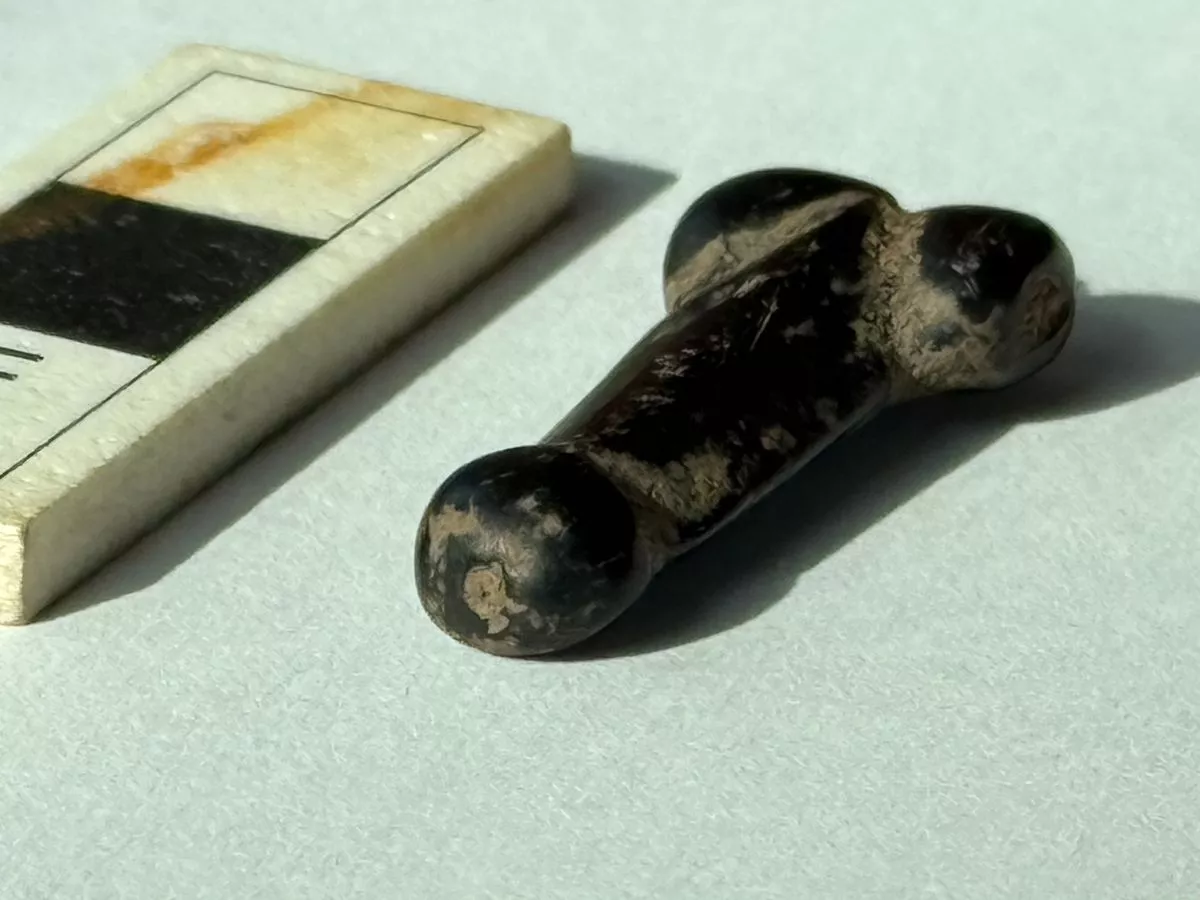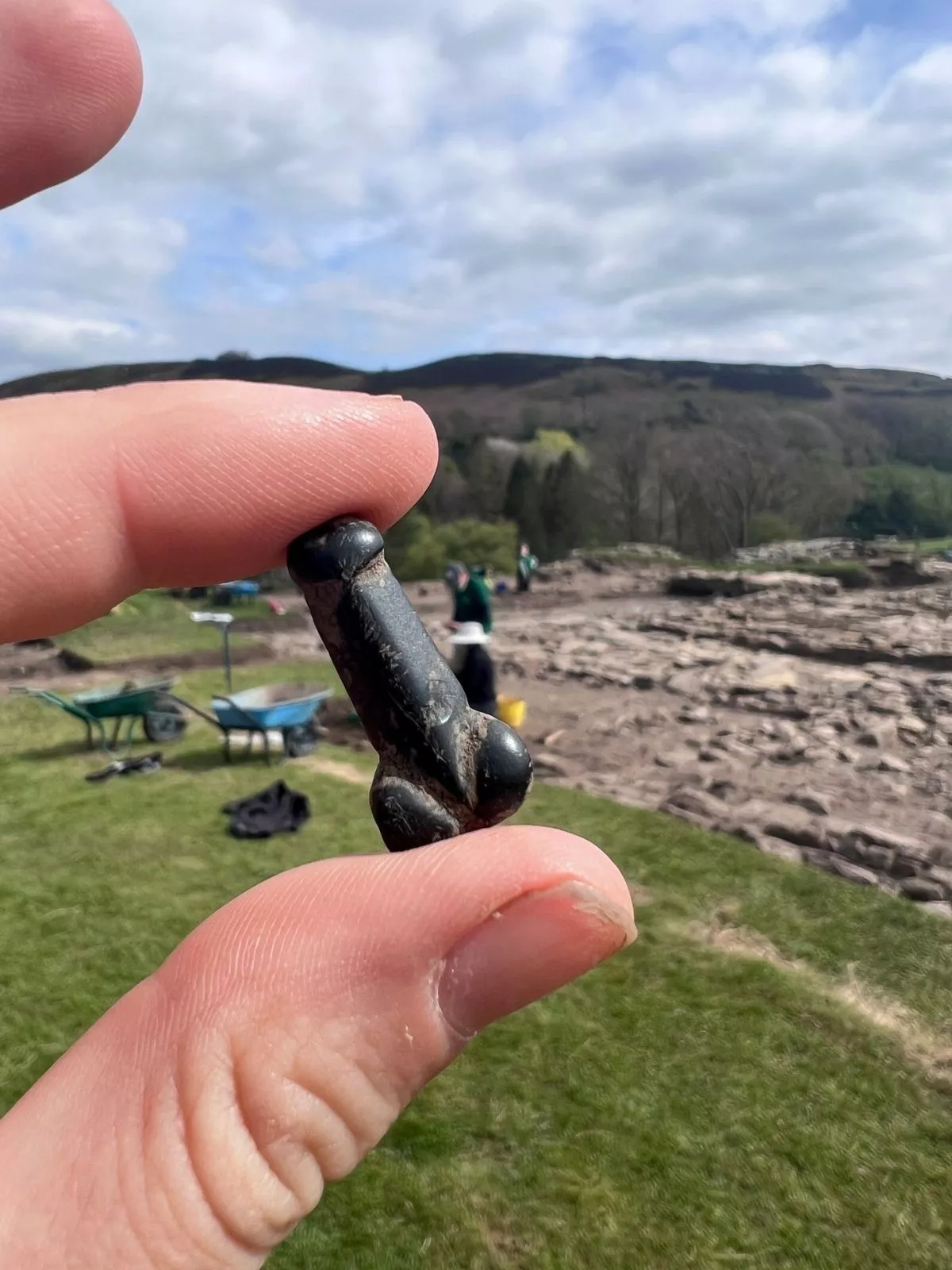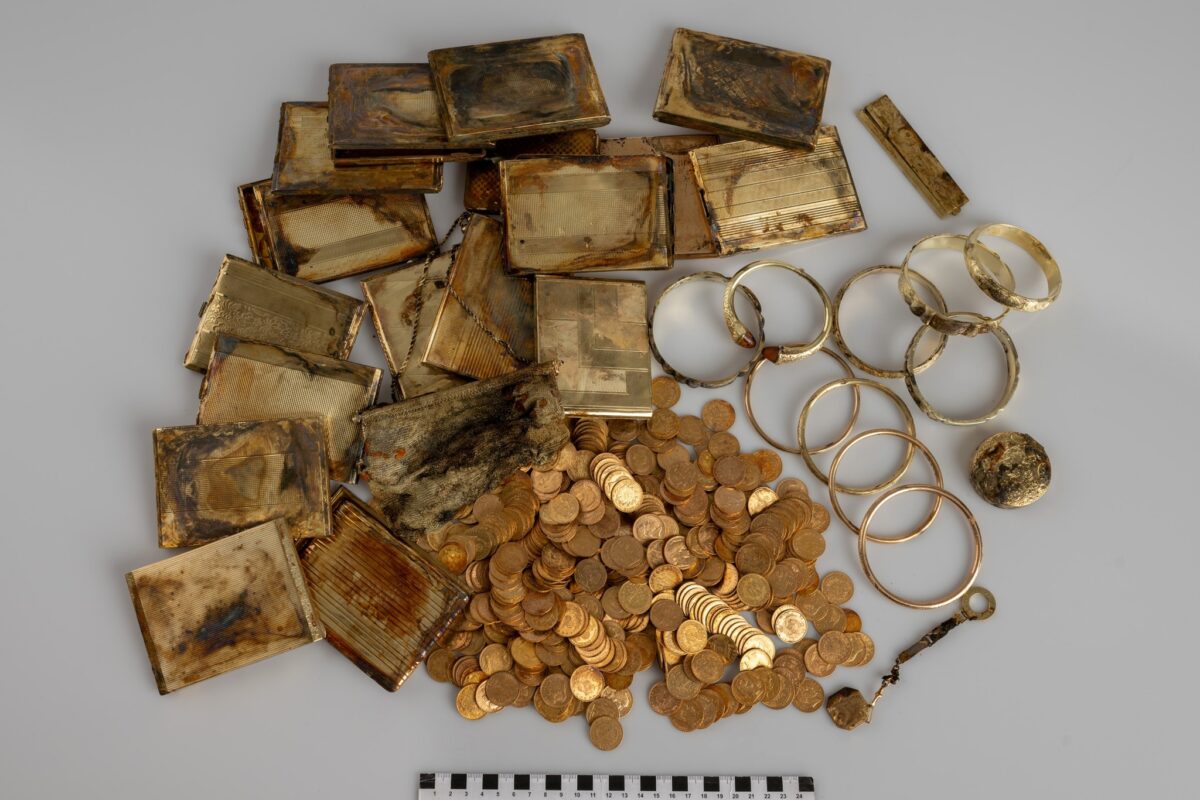Recent excavations at the Vindolanda Roman Fort have unearthed a small, 2.5 cm long phallus pendant made of jet, dating back to the early 4th century AD. Dr. Andrew Birley, the director of the Vindolanda excavations, estimates that this “wonderful little artifact” was lost sometime around the construction of the barracks wall where it was found. Noting that jet became an increasingly common material for jewelry making from the early 3rd century onwards, Birley suggests that these kinds of small lucky charms or pendants would have been worn by many of the soldiers at places like Vindolanda, and the smoothness of the pendant indicates it was likely touched frequently by its owner for good luck.
During the Roman period, the phallic symbol was widely used as a lucky charm, believed to ward off evil and bring fertility. This small jet phallus from Vindolanda, near Hadrian’s Wall, suggests that size wasn’t always what mattered.

This season’s excavations have also revealed an L-shaped lift key, a small glass medicine vial, and a green glass bead. Vindolanda has a history of yielding phallic artifacts; in 2023, experts suggested that a discarded darning tool found at the fort was the first known example of a “Roman sex toy,” and in May 2022, a volunteer discovered a depiction of a male appendage carved next to the words ‘Secundinus cactor,’ or ‘Secudinus, the sh**ter’ in an early example of graffiti. However, this latest find is the first phallic object made of jet.

Over the years, excavations at Vindolanda have produced less risqué but nonetheless significant finds, including the world’s oldest boxing gloves, the largest collection of Roman leather shoes, and a Roman altar dating to the third century AD. This latest discovery adds another intriguing piece to the fort’s rich history.
Cover Photo: Vindolanda Roman Fort





